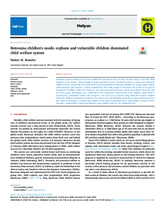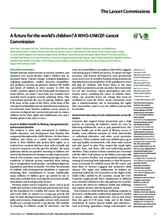Displaying 121 - 130 of 498
This study sought to determine the needs of the general population of children in Botswana.
The authors of this study draw on the decision-making ecology model of judgement and decision making in child protection to speculate on possible causes of false positive errors in decision making regarding the removal of Aboriginal and Torres Strait Islander children from their families.
This comparative analysis will illuminate how injustices continue to be reproduced, focusing on the child welfare system, as part of the devastating effects that colonization has on Aboriginal peoples, but also as evidence of colonization being reproduced through current discriminatory legislation and practices.
This paper presents a participatory research study that explored the experiences of a group of Aboriginal Australian parents who have had their children removed by child protection authorities in one Australian state, New South Wales.
This article argues that child protection agencies must provide mandatory training about the Aboriginal experience within the welfare state and the resultant trauma that exists in Australian Indigenous communities.
This WHO–UNICEF–Lancet Commission lays the foundations for a new global movement for child health that addresses the two crises of climate change and predatory commercial exploitation, and presents high-level recommendations that position children at the centre of the Sustainable Development Goals (SDGs).
The premise of this paper is that Indigenous peoples are multiplicatively oppressed and that these intersecting sites of oppression increase the risk of Indigenous peoples in Canada becoming homeless. The study found that Indigenous identity, involvement in the child welfare system, and level of educational achievement were all significantly associated with experiences of hidden and visible homelessness.
The premise of this paper is that Indigenous peoples are multiplicatively oppressed and that these intersecting sites of oppression increase the risk of Indigenous peoples in Canada becoming homelessness. Hypotheses were tested using the 2014 panel of Canada’s General Social Survey, including 1081 Indigenous peoples and 23,052 non-Indigenous white participants.
This research explains how and why homelessness occurs among youth with serious mental health struggles after aging out of residential and transitional living programmes.
In this article, the authors examine theoretical and legislative conceptualizations of child neglect in terms of their relationship to the disproportionate involvement of Indigenous children in child welfare across Canada and, more specifically, in Quebec.


